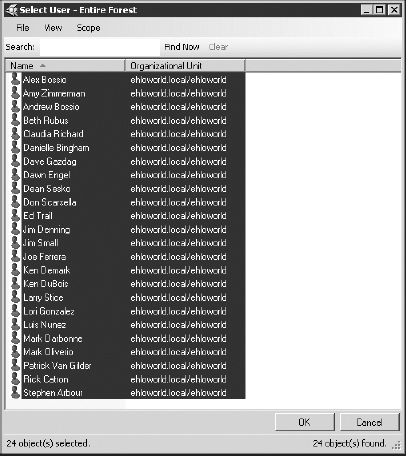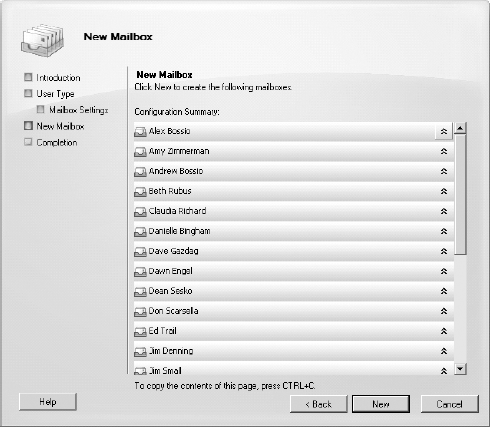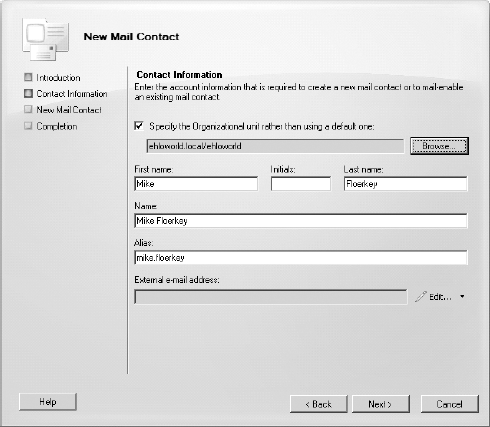Mailbox-enabled users are Active Directory accounts that have a mailbox located in Exchange. To create a mailbox-enabled user:
Open the EMC and navigate to Microsoft Exchange => Microsoft Exchange On-Premises (server) => Recipient Configuration => Mailbox. You will notice that the Administrator is already listed, as is the Discovery Search Mailbox.
To create a new mailbox, go to the Actions pane on the right side and click New Mailbox.
Choose User Mailbox, and click Next.
To
create a mailbox for a user that does not yet exist in Active
Directory, click New User and then click Next. To create a mailbox for
a user that already exists in Active Directory, click Existing User.
Highlight the users you want to mailbox-enable, as shown in Figure 1.
Click OK, then click Next.
On
the Mailbox Settings screen, enter an alias for the user. All the other
fields can be left blank. Click Next. Note that if you select multiple
users, aliases are automatically generated for each.
On the New Mailbox screen, shown in Figure 2, click New, and then click Finish. Mailbox-enabled users are now visible.
Creating mailbox-enabled users in the Exchange
Management Shell is quite simple using the Enable-Mailbox cmdlet. An
example would be:
Enable-Mailbox -Identity Abby.Smith


Mail-enabled contacts are objects in the Global
Address List that represent external recipients. These can be vendors
or clients. To create a new mail-enabled contact:
In the Exchange Management Shell, navigate to Microsoft Exchange => Microsoft Exchange On-Premises (server) => Recipient Configuration => Mail Contact.
In the Actions pane, click New Mail Contact.
Click New Contact and click Next.
If
the Specify An Organizational Unit Rather Than Using A Default One
option is left blank, the mail contact will be placed in the Users OU.
Fill out the fields for the name and alias, as shown in Figure 3.

Under External E-mail Address, click Edit.
Enter an email address and click OK; then click Next.
On the New Mail Contact screen, click New, and then click Finish.
Creating a mail contact in the Exchange Management Shell is quite simple using the New-MailContact cmdlet:
New-MailContact -Name "Claudia Richard" -ExternalEmailAddress "[email protected]"